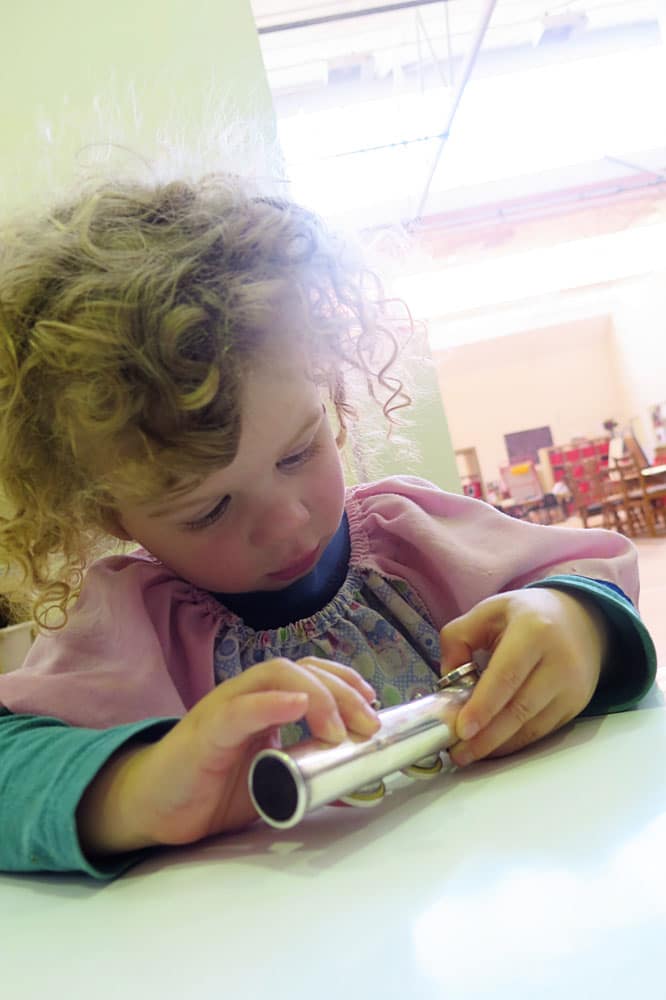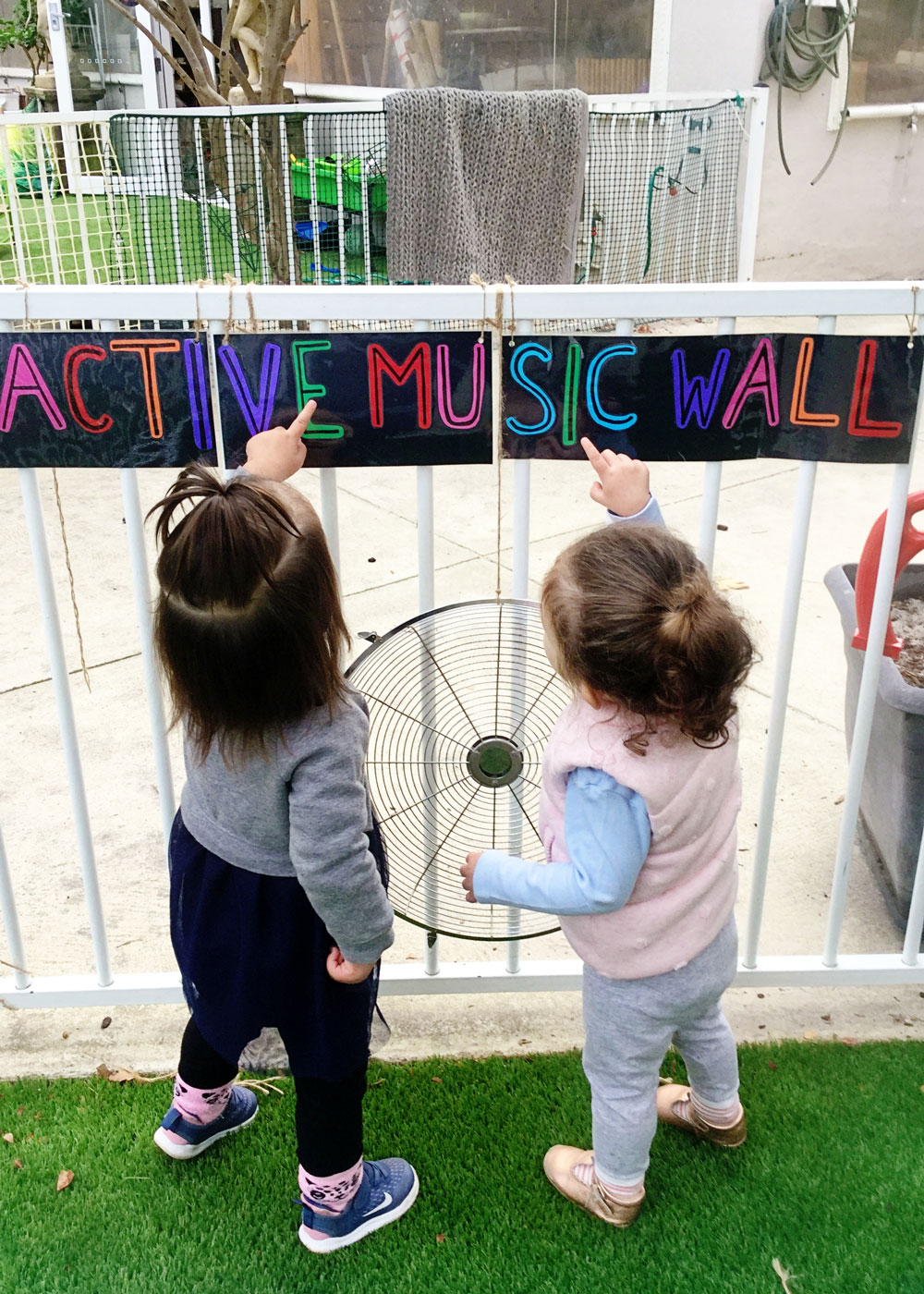Toddler Music Research 2019
The toddler’s instinctive musical responses and their dispositions to music-making and dancing captured educators’ curiosity this year.
SOEL educators from sister centres in Studios and Toddler rooms came together to research how music and sounds can transform the toddlers and the world they live in. They collaboratively planned and met every 7 weeks to share findings, gather evidence, develop new lines of inquiry and find inspiration from one another.

West Leederville Toddlers
The investigation of sound and music with the toddlers began with the exploration of familiar sounds (e.g. voices of educators and peers). Their responses let us know that sound is a large part of how children construct their community.
During the provocations for the children to explore music using found materials we could observe how young children don’t need “real instruments” to create sound as they are experts at finding the musical potential in the materials around them.






As the investigation progressed, the toddlers in West Leederville were introduced to instruments so they could compare their sound making potential. Drums and percussion- Guitar- Trombone. These large sounds transformed their environment and heightened the energy of the whole centre.
No matter what we provided the children with, they would always seek out creative ways to respond to music and sound through the movement of their bodies. The joy of music could not be contained. It needed to be expressed.
This research also transformed the educators involved by allowing them to become more musically playful during their investigations and routines. It helped them add depth and new perspectives to existing spaces, ideas and concepts explored in their programmes. It amplified the educators’ curiosity and inquiry processes towards children’s personal sound and music explorations.




Music and sound transformed the toddlers by giving them a voice to express themselves before words could.
Subiaco Toddlers
The transformative aspect of sound was explored in a collaborative manner by the educators and children of the Townsend and Trillo rooms through joint sessions during the year. This fostered a stronger sense of community within both rooms.
The sound making potential of every day materials was explored in the classroom, garden and in the studio. The toddlers’ resourcefulness and creativity were evident during these experiments.




We could observe how young children don’t need “real instruments” to create sound as they are experts at finding the musical potential in the materials around them.






These consistent experiences allowed the children to move from an experimental music- making phase to a more purposeful one.
For the young toddlers in Townsend, music and sound explorations evoked humour and playfulness amongst the group which promoted social connection through the children’s shared interest. Their responses to familiar instruments, sounds and songs included laughter, facial expressions and dance.
Some toddlers responded to unique sounds by seeking social cues from nearby educators, particularly when hearing non-rhythmic loud sounds. As the year progressed, the toddlers became more accustomed to hearing unique sounds through the speakers and headphones.
For the older toddlers in Trillo, the research facilitated relationship building and connection within the group. Familiar songs and rhymes supported routines and transitions, making them smooth and predictable. The footage taken during this time provided a valuable tool for the children to reflect on their learning and previous experiences.
Music also provided another layer of depth to the children’s ongoing investigations into Family and identity explored through their “worm farm” inquiry. Relationships, mindfulness, humour and playfulness supported the children’s understandings of Music.
North Perth Toddlers
The investigation of sound and music began with the children being exposed to different sounds and genres of music as they went about their daily experiences. We listened and observed their reactions. Small recording devices with messages left upon them by educators, evoked surprise and often recognition at the familiar sounds arising during these unexpected interactions.
Bluetooth speakers were introduced where the children began making sense of and forming correlations between sound and source.






Mediums were explored using different methods than before. We began with investigating sound/movement through art mediums, making sound visible; be it the clay as it squelched or dropped, the movement of paint on drums or paint running down a surface and dripping into a vessel below.
With the introduction of headphones, we soon observed the children engaging with the mediums with heightened awareness and a connectivity of the sense. We were beginning to slow down. Bibool’s emerging interest in animal sounds resulted in immersive soundscape experiences.
Play, music and art mediums intertwined, sounds were mimicked, and role play was taking place as the ‘landscape’ was manipulated as forest, jungle or farm sounds played.




With confidence and curiosity emerging, other spaces were beginning to be explored. As the Wonnil children encountered the acoustics of the stairwell, the concrete space slowly transformed and came alive. Floors became interconnected by ‘sound pipes’, funnels and chatter, children and educators from other rooms were interacting.
‘Hidden’ music was an invitation to play the steps like a piano or tap the stair rail as stairs were climbed. Children were introducing their parents to the stairwell, the sounds it contained and together they created sounds on their journey within it.
